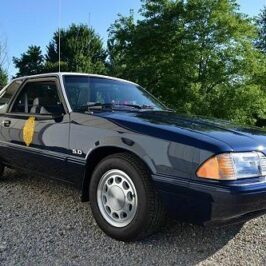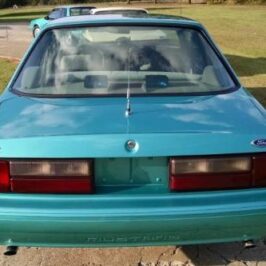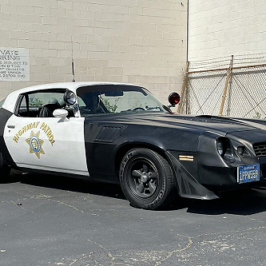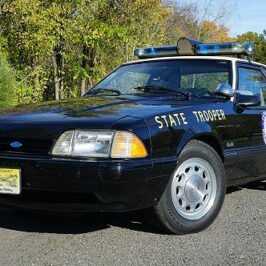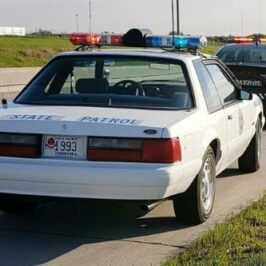Imagine cruising California’s highways in the late 1950s and spotting a sleek black-and-white Mercury Monterey with official CHP markings. It wasn’t just another car—it was one of the most powerful and specialized patrol vehicles of its era. Thanks to collector Roger Clements, one of these rare machines has been resurrected, restored, and reintroduced to the world. This is the story of the last known fully restored 1958 Mercury Monterey California Highway Patrol cruiser.
Bill Stroppe’s Secret Police Special
In 1958, the California Highway Patrol issued strict requirements for its new fleet vehicles. They demanded:
- Two-door sedans with center B-pillars
- A minimum 122-inch wheelbase
- A curb weight of at least 3,800 lbs
- An alternator instead of a generator
- Heavy-duty brakes, suspension, and cooling
- 15-inch wheels
- A naturally aspirated V8 engine of at least 350 cubic inches
- 10:1 compression ratio
- Single carburetor
- Weight-to-horsepower ratio not exceeding 15:1
- A conventional (non-limited slip) differential
Mercury delivered. With help from legendary west coast performance builder Bill Stroppe, Mercury created 325 CHP-spec Monterey cruisers. These weren’t just showroom cars with a badge—they were specifically modified for duty.
Fun Fact: While the CHP didn’t disclose who modified their cruisers, it’s now well known that Stroppe’s shop was behind the build.
Factory Plus – CHP-Specific Modifications
The 1958 Monterey cruisers received substantial mechanical, and equipment upgrades to meet high-speed patrol and durability standards. These CHP-specific modifications included:
- Fitted with beefier Park Lane front spindles and hubs
- larger heavy-duty front anti-roll bar with revised mounting points
- Specially valved heavy-duty shocks
- “Export” front coil springs
- Station wagon rear leaf springs
- Rear brake drums were upgraded from 11 x 2.5-inches to the same 11 x 3.0-inch standard front brakes
- Heavy-duty brake linings
- Radiator designed for air conditioning was fitted and positioned to provide space for the siren, alternator rectifier, and external radio speaker
- Special mechanical cooling fan with a reinforced hub was used along with a revised fan pulley
- Steering wheel with 360-degree horn ring
The cars were wired so the horn ring could activate the siren or the horn, depending on the position of a toggle switch on the dash. The idea was that an officer could activate the siren at any point during turning the wheel.
Under the Hood – Big Power for Big Duty
At the heart of the Monterey sat a massive 430 cubic-inch MEL V8, pumping out an estimated 345 horsepower. This engine was paired with a Merc-O-Matic automatic transmission and 3.22 rear axle gearing, giving the car strong top-end power and torque.
Other competitors in CHP testing that year included:
- Pontiac: 389 ci V8 (~330 hp)
- Dodge: 383 ci D-500 (~325 hp)
But Mercury came out on top due to its overall performance and durability on California’s highways.
Roger’s Restoration Mission
Roger Clements has restored rare cars before—his 1954 Stroppe-built Lincoln Carrera Panamericana racer is a good example. So, when he found this Monterey in 2006 in Northern California, he knew what he was looking at.
Although the car had lost its siren, radio, and emergency lighting, it still had telltale signs of its patrol car origin. Over the next several years, Roger carefully returned the car to period-correct CHP specification, hunting down original communications gear, Stroppe-specific parts, and vintage lighting.
One of the biggest challenges Roger faced revolved around the original police-spec radio and lighting equipment. Without an original example to compare his car to, Roger had to put on his detective hat to figure out what was right. An invaluable resource was Geoff Fors, a historian of all things related to CHP radio equipment. Through Geoff, and aided by period emergency equipment manufacturer catalogs and CHP literature, Roger learned that the ’58 CHP Mercurys were fitted with General Electric radio gear, specifically from the company’s Progress line.
“I wanted this to be as accurate as possible—down to the mechanical siren and factory-style spotlight mounts.”
Still Chasing Details
Since the car’s show debut in 2011, Roger has continued his work. One detail still eludes him: the correct Federal mechanical siren. The car currently uses a Sireno unit, but he’s still on the hunt for the exact model the CHP would’ve used.
That level of detail sums up his approach. This isn’t just a cool build—it’s a historically accurate one.
Why It Matters
This isn’t just a rare police cruiser—it’s a living piece of automotive and law enforcement history. The 1958 Mercury Monterey CHP cruiser represents a unique moment when raw performance, innovative engineering, and public service came together.
It’s also a tribute to Bill Stroppe’s lesser-known yet significant work preparing fleet cars to be as tough and capable as anything rolling out of Detroit’s showrooms.
Specs at a Glance
| Specification | Details |
|---|---|
| Engine | 430 ci MEL V8 (~345 hp) |
| Transmission | Merc-O-Matic Automatic |
| Rear Axle Ratio | 3.22:1 |
| Vehicle Weight | Approx. 4,560 lbs |
| CHP Units Delivered | 325 (Mercury), 287 (Dodge) |
| Body Style | 2-door sedan, 122″ wheelbase |
| Builder | Bill Stroppe |
| Modifications | Full CHP package + HD upgrades |
Conclusion
Thanks to Roger’s meticulous restoration, this Monterey isn’t just preserved—it’s alive again. It honors an era when muscle met the law and when California’s highways were ruled by some of the most powerful patrol cars ever built.
It’s a one-of-a-kind survivor. A true rolling tribute to CHP history and the brilliant minds—like Bill Stroppe—who quietly made it possible.
Gallery
About The Author
Code 3 Garage
I started my career as a police officer in 1989 with the Geneva on The Lake Police Department. I worked part time as a police officer and full time as a Security Sergeant doing armed mobile security patrols for a local security company. In 1990 I became a State Trooper with the Ohio State Highway Patrol. During my career as a State Trooper I was certified as a Technical Crash Investigator, OPOTA Police Instructor, OPOTA Police Driving Instructor, LASER Instructor, and received awards for ACE (Auto Larceny) and Post Trooper of The Year. Code 3 Garage is a mix of my inner automotive gearhead, and public safety background. I hope you enjoy it!


















